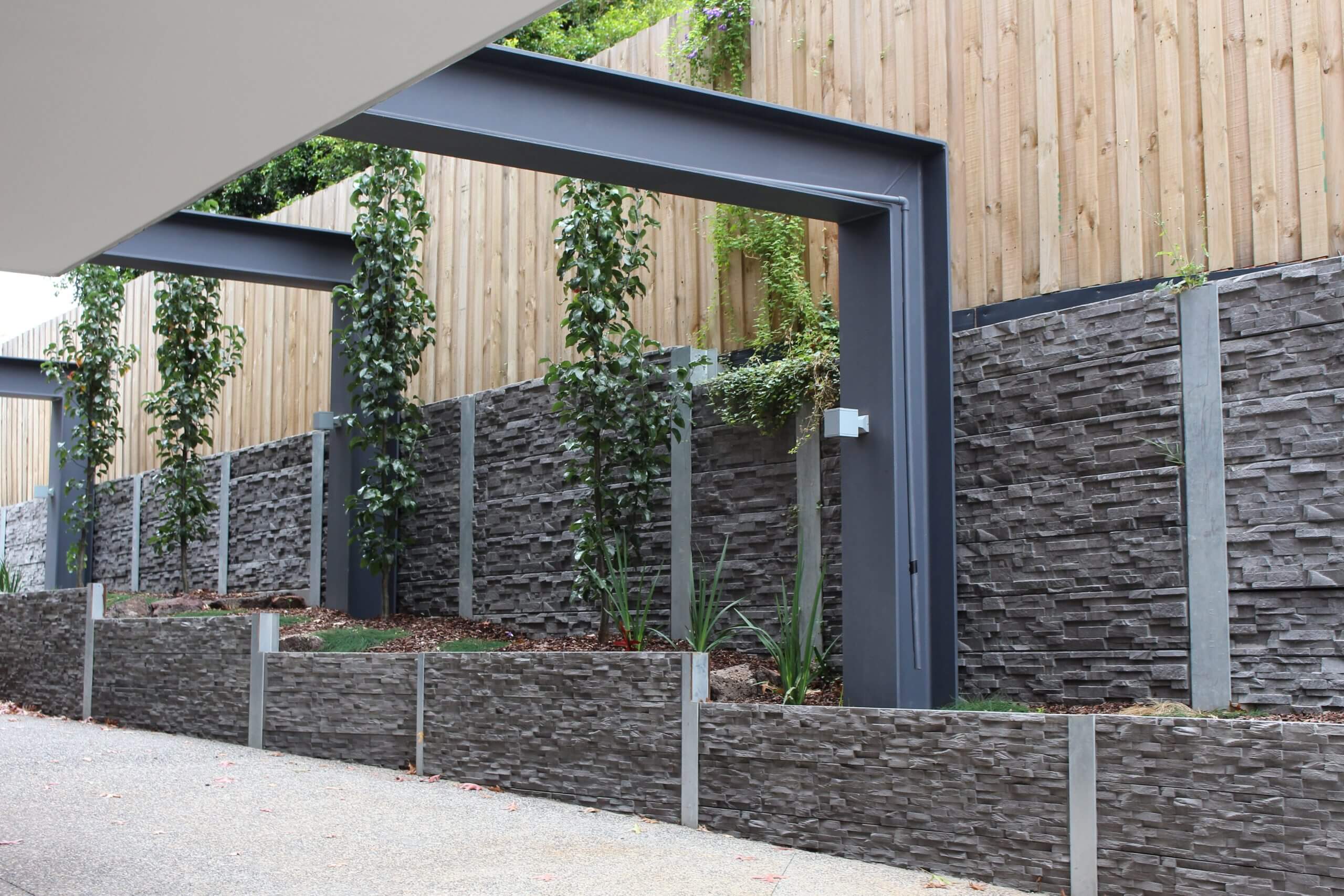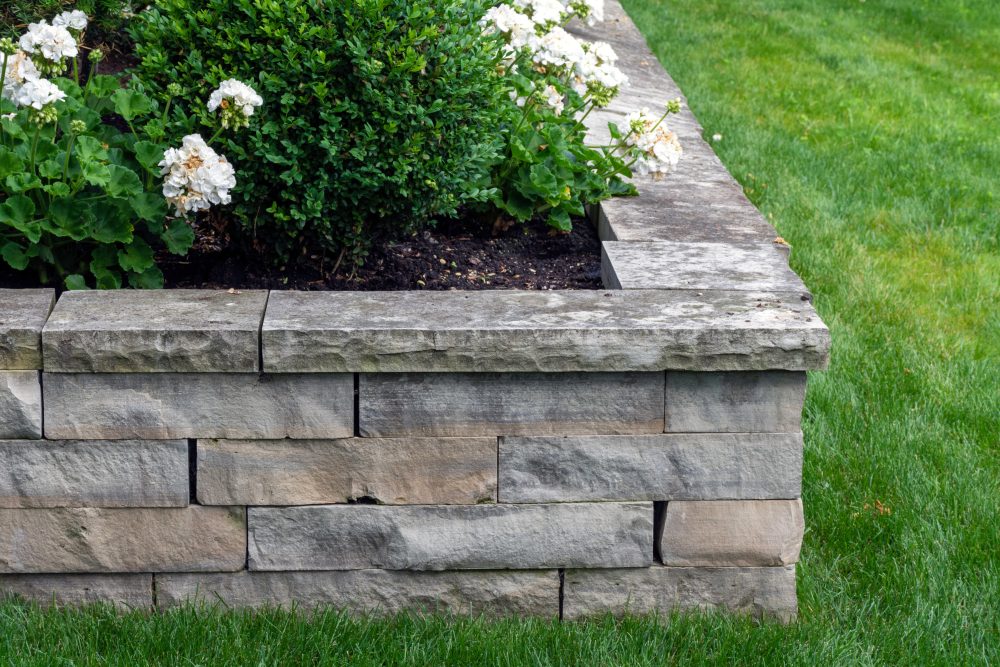How to select the right construction materials for your OKC Precision Retaining Walls
The Vital Overview to Recognizing the Capability of Retaining Walls
When it involves managing sloped landscapes, retaining walls are crucial. They not only keep back dirt yet likewise protect against erosion and secure your residential or commercial property from potential landslides. Recognizing their functionality can assist you make informed choices about layout and maintenance. What types of retaining walls are offered, and just how do you pick the ideal materials? Let's check out these crucial factors to consider further.
What Are Retaining Walls and Their Function?
Retaining walls are crucial structures developed to hold back dirt and prevent erosion, particularly on sloped landscapes. They supply security to your property, making sure that dirt continues to be in place and stopping possible landslides. When you consider a preserving wall surface, consider its role in managing water runoff, which can erode dirt gradually. Without these walls, you might face costly damage to your landscape and foundation.
Furthermore, retaining walls can create functional rooms in your lawn. By leveling out a sloped area, you can get much more functional outdoor room for gardening, patio areas, or play areas. The layout and materials you pick can boost your building's appearances, making it aesthetically appealing.
Eventually, understanding the function of retaining walls aids you appreciate their value in landscape administration (OKC Precision Retaining Walls). They not just secure your residential or commercial property however additionally add to the total beauty and functionality of your exterior space
Kinds of Retaining Walls: An Introduction
When it pertains to managing dirt and water overflow in your landscape, recognizing the different sorts of retaining walls can help you make an educated selection for your property. Gravity walls rely upon their weight to keep back soil, making them a durable alternative for smaller sized inclines. Cantilever walls, on the other hand, make use of a lever-like design, which permits them to sustain more considerable lots with much less material. For more complicated surfaces, secured walls provide added security by utilizing cable televisions anchored right into the ground. There are modular block walls, which provide convenience and convenience of installment with interlocking blocks. Each kind has its advantages and applications, so take into consideration aspects like soil conditions, elevation demands, and visual preferences before making your choice. Understanding these choices will equip you to boost your landscape properly while stopping erosion and managing water drainage.
Secret Materials Made Use Of in Retaining Wall Building And Construction
To develop a strong and efficient retaining wall, choosing the right products is important. You'll find that concrete is a popular option as a result of its sturdiness and toughness. Precast concrete obstructs deal versatility in design, while poured concrete offers a seamless appearance. If you choose a more natural look, stone or brick can add visual appeal and blend with the landscape.
Timber is one more choice, specifically for smaller sized walls, but bear in mind it may not last as long due to decay. Steel and gabion walls, which use cable mesh loaded with rocks, are additionally efficient for specific scenarios. Each material has its own benefits and drawbacks, so consider your wall's objective, location, and budget. Ultimately, the best material will certainly improve the wall's security and long life, guaranteeing it meets your requirements while standing the test of time.

Design Considerations for Efficient Retaining Walls
Creating a reliable retaining wall entails cautious consideration of several vital variables, as the wall surface must hold up against both upright and side forces. Assess the dirt type and its buildings; cohesive soils behave in a different way than granular ones. You'll additionally intend to determine the elevation of the wall, as taller walls need even more durable style services.
Following, take into consideration water drainage. Appropriate water drainage avoids water buildup behind the wall, minimizing stress and potential failing. Integrate weep openings or drainage pipelines for reliable water administration.
Likewise, think of the materials you'll make use of. Various materials, like concrete, rock, or lumber, deal differing toughness and looks.
Finally, do not forget regional policies and codes. They commonly determine design requirements and building methods. By attending to these considerations, you can guarantee your retaining wall is not only functional but also long lasting and risk-free.
Applications of Retaining Walls in Landscaping and Construction
Retaining walls offer a necessary function in both landscape design and building and construction, as they aid take care of modifications in elevation and prevent soil erosion. In landscaping, you can utilize them to produce attractive terraced yards, allowing you to optimize your outside space while adding aesthetic passion. They additionally aid define locations, such as pathways or blossom beds, improving your landscape's total design.
In building, retaining walls give stability to structures developed on sloped land, assuring safety and security and toughness. They're usually made use of in streets and business homes to take care of earth movement and water drainage effectively. By protecting against soil from shifting, retaining walls safeguard structures and keep the honesty of your building projects.
Whether Related Site you're looking to enhance visual charm or assurance architectural security, retaining walls use practical options that can significantly benefit your landscape and building and construction ventures. Accept their convenience to achieve both visual and practical objectives.
Upkeep Tips for Long-Lasting Retaining Walls
To keep your retaining walls in wonderful shape, routine inspections and timely repairs are crucial. You additionally require to ensure proper drainage options to prevent water build-up, which can weaken the framework. Handling plant life around the walls will help maintain their integrity and expand their life-span.

Regular Examinations and Fixings
While you may believe your retaining wall surface can stand solid on its own, normal examinations and timely fixings are important for its durability. Look for any moving in the soil bordering the wall, as this can suggest much deeper concerns. By being aggressive regarding inspections and repair work, you'll guarantee your retaining wall surface stays durable and practical for years to come.
Appropriate Water Drainage Solutions
Effective drainage is vital for keeping the honesty of your retaining wall surface, as water build-up can bring about significant structural issues. To guarantee correct drain, mount weep openings at routine intervals along the wall. These small openings permit excess water to run away, preventing pressure build-up behind the wall surface. You should likewise consider including a water drainage pipeline at the base of the wall surface, directing water far from the framework. Use gravel backfill to advertise drainage and decrease soil saturation. On a regular basis inspect and clear any type of particles from drain systems to maintain circulation. By carrying out these remedies, you'll enhance the longevity and security of your retaining wall, safeguarding it against possible damage triggered by water accumulation.
Vegetation Administration Strategies
Healthy plants can play an important duty in the durability of your retaining wall surface. Beginning by selecting deep-rooted plants that aid support the dirt without creating pressure on the wall.
Keep the greenery cut to prevent excess weight and preserve proper water drainage. It's important to prevent overwatering, as excessive moisture can deteriorate the wall surface's structure. Furthermore, think about making use of mulch to retain soil moisture while subduing weed growth. By applying these greenery monitoring techniques, you'll sustain your retaining wall's resilience and enhance the bordering landscape's appeal.
Typical Problems and Solutions for Retaining Walls
When it concerns retaining walls, dirt disintegration and water drainage problems can trigger major migraines. You require to ensure your wall is properly made to protect against erosion and has an efficient drainage system in place. Allow's check out some typical troubles and their options to keep your retaining wall surface strong and practical.
Dirt Erosion Avoidance
Dirt erosion can be a considerable obstacle for retaining walls, particularly if not correctly resolved. When dirt deteriorates, it can threaten the wall surface's security, causing potential failures. To avoid this, you ought to think about planting vegetation along the wall surface's base. Roots aid hold the soil together, decreasing disintegration. Furthermore, using disintegration control coverings or mats can give instant defense while plants establish. You can likewise apply compost to reduce surface area runoff and secure the dirt. Routine upkeep, like examining for splits or signs of shifting, is important to capture issues early. By taking these positive actions, you can significantly enhance the long life and efficiency of your retaining wall surface versus soil disintegration.
Drain System Significance
A reputable drainage system is vital for the effectiveness and durability of retaining walls. Without appropriate water drainage, water can gather behind the wall, producing too much stress that can lead to structural failure. You may see protruding or cracking, which signals the demand for immediate attention. To stop these problems, think about setting up weep openings, which permit water to run away, or a perforated drain that reroutes water away from the wall surface. Routinely inspect for obstructions in your drain system, as debris can hinder its efficiency. Maintaining correct water drainage not just secures your retaining wall however additionally ensures the surrounding landscape remains stable. By remaining aggressive, you can stay clear of expensive repair work and prolong the life of your retaining wall.
Often Asked Concerns
Exactly How Do Retaining Walls Impact Drain Solutions?
Retaining walls can significantly affect water drainage systems by redirecting water flow. They avoid soil disintegration and manage groundwater levels, making certain security. If you're intending building and construction, take into consideration exactly how they'll connect with your water drainage style for excellent results.
Can Retaining Walls Be Mounted on Inclines?
Yes, you can mount retaining walls on slopes. They assist maintain the dirt and stop erosion. Just ensure proper drainage and pick the ideal products to manage the pressure from the dirt behind the wall surface.
What Is the Lifespan of a Typical Retaining Wall?
A find this common retaining wall lasts around 20 to 50 years, relying on materials, upkeep, and ecological conditions. You need to consistently inspect it to ensure its long visit homepage life and address any type of concerns quickly to avoid expensive fixings.
Are Permits Required for Building Retaining Walls?
Yes, you normally need licenses for building retaining walls. Check your regional building regulations and regulations to assure conformity. It's vital to secure the best authorizations before beginning your task to stay clear of possible fines or issues.
How Do Retaining Walls Influence Home Value?
Retaining walls can positively affect your residential property worth by boosting appearances, avoiding erosion, and producing functional outdoor space. OKC Precision Retaining Walls. They also demonstrate great land management, making your residential or commercial property much more enticing to possible customers in the marketplace